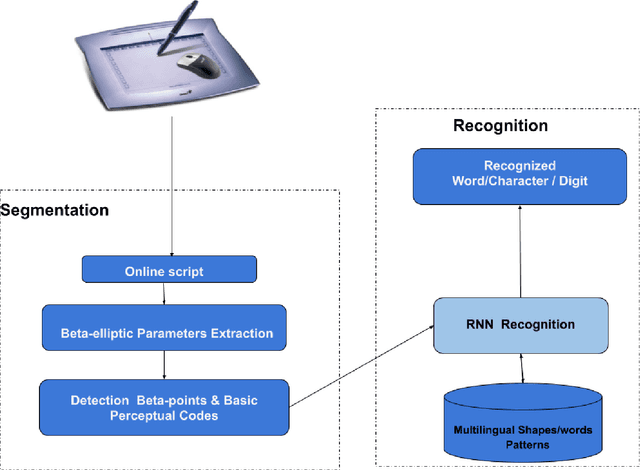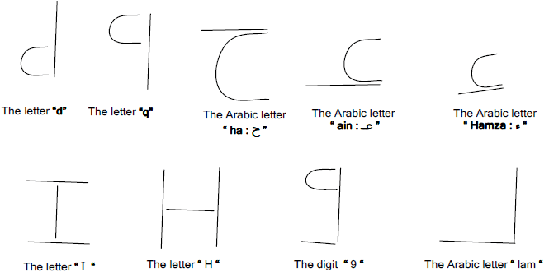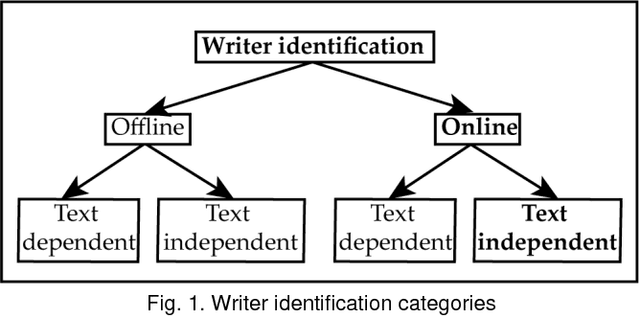Wael Ouarda
Neural Architecture based on Fuzzy Perceptual Representation For Online Multilingual Handwriting Recognition
Aug 01, 2019



Abstract:Due to the omnipresence of mobile devices, online handwritten scripts have become the most important feeding input to smartphones and tablet devices. To increase online handwriting recognition performance, deeper neural networks have extensively been used. In this context, our paper handles the problem of online handwritten script recognition based on extraction features system and deep approach system for sequences classification. Many solutions have appeared in order to facilitate the recognition of handwriting. Accordingly, we used an existent method and combined with new classifiers in order to get a flexible system. Good results are achieved compared to online characters and words recognition system on Latin and Arabic scripts. The performance of our two proposed systems is assessed by using five databases. Indeed, the recognition rate exceeds 98%.
* 15 pages; 17 figures
Taylor-based Optimized Recursive Extended Exponential Smoothed Neural Networks Forecasting Method
Nov 01, 2018



Abstract:A newly introduced method called Taylor-based Optimized Recursive Extended Exponential Smoothed Neural Networks Forecasting method is applied and extended in this study to forecast numerical values. Unlike traditional forecasting techniques which forecast only future values, our proposed method provides a new extension to correct the predicted values which is done by forecasting the estimated error. Experimental results demonstrated that the proposed method has a high accuracy both in training and testing data and outperform the state-of-the-art RNN models on Mackey-Glass, NARMA, Lorenz and Henon map datasets.
An Online Writer Identification System based on Beta-Elliptic Model and Fuzzy Elementary Perceptual Codes
May 30, 2018



Abstract:Actually, the ability to identify the documents authors provides more chances for using these documents for various purposes. In this paper, we present a new effective biometric writer identification system from online handwriting. The system consists of the preprocessing and the segmentation of online handwriting into a sequence of Beta strokes in a first step. Then, from each Beta stroke, we extract a set of static and dynamic features using four features extraction techniques based on the Beta Elliptic model and the Fuzzy Elementary Perceptual Codes. Next, all the segments which are composed of N consecutive Beta strokes are categorized into groups and subgroups according to their position and their geometric characteristics. Finally, Deep Neural Network are used for classification. Experimental results reveal that the proposed system achieves interesting results as compared to those of the existing writer identification systems on Latin and Arabic scripts.
 Add to Chrome
Add to Chrome Add to Firefox
Add to Firefox Add to Edge
Add to Edge